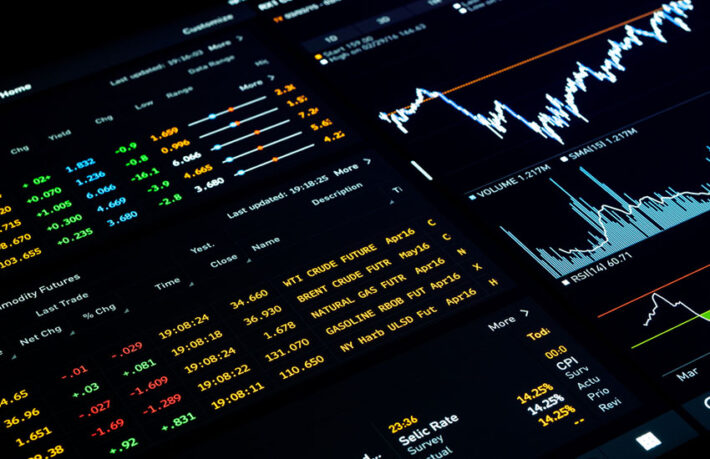Mastering Market Movements: A Guide to Trading Trends
Understanding trading trends is crucial for making informed decisions about buying or selling assets. Whether prices are rising, falling, or moving sideways, recognizing trends can help you capitalize on opportunities and minimize losses.
There are three primary types of trends: sideways, bullish, and bearish. Each corresponds to the direction of an asset’s price movement and represents a fundamental concept in trading.
This guide explores the three primary types of trading trends—bullish, bearish, and sideways—highlighting their significance and how traders can effectively use them to navigate the financial markets.
What Are Trends in Trading?
In trading, trends refer to the consistent movement of a financial asset’s price in one direction over time. Whether prices are steadily increasing or decreasing, identifying these trends helps traders optimize their decisions for profitability.
This concept is vital in analyzing price behavior, enabling traders to determine the best moments to buy or sell. Combining price analysis with external factors, such as macroeconomic events, can significantly enhance investment decisions.
Main Properties of Trends
- Direction
- The trend’s direction depends on the time frame analyzed. Longer time frames often provide a broader but less precise view of short-term price changes.
- Strength
- Measured by the steepness of the price curve on a chart, stronger trends usually exhibit sharper angles. However, such trends can be short-lived.
- Continuation
- Refers to how long a trend lasts. Longer continuations typically indicate more sustainable trends.
Types of Trends in Trading
The direction of an asset’s price movement defines its trend, which can be one of three types:
- Bullish Trend
- Occurs when an asset’s price consistently rises over a period.
- Bearish Trend
- Happens when an asset’s price steadily declines.
- Sideways Trend
- The asset’s price moves within a narrow range, lacking a clear upward or downward trajectory.
Trends are not permanent and evolve due to market conditions. Using technical indicators is essential for confirming trends and predicting potential changes. Technical indicators are mathematical calculations based on price, volume, or open interest, and they help traders interpret market trends and potential reversals. Common examples include moving averages, relative strength index (RSI), and Bollinger Bands, each offering unique insights into market behavior.
Navigating Trends in Trading
Understanding how to act during different market trends is crucial for successful trading. Whether you’re riding the momentum of an uptrend, mitigating losses in a downtrend, or tackling the challenges of a sideways trend, aligning your strategy with the market’s behavior can significantly impact your outcomes. Here’s a breakdown of the approaches traders commonly take for each type of trend.
- In an Uptrend: Traders often buy assets to benefit from anticipated price increases.
- In a Downtrend: Selling assets can help avoid further losses.
- Countertrend Trading: This riskier strategy involves trading against the trend, such as selling in an uptrend or buying in a downtrend. Success relies on precise timing and market analysis.
Example
An investor buys an asset during a downtrend at €30. If the trend reverses and the price rises to €35, they sell at a profit. While this approach can be lucrative, it requires experience and is not recommended for beginners.
- In a Sideways Trend: Returns are typically modest due to limited price movement, making it less appealing to traders seeking significant gains.
How to Use Trends in Trading
To identify market trends, traders use technical analysis, which involves studying price charts to understand price behavior. This analysis is essential regardless of the trading strategy—whether it’s swing trading, scalping, or day trading.
The time frame selected for analysis significantly impacts trend interpretation. For instance, an asset may show an upward trend over minutes or hours, but a longer-term analysis could reveal a downward trend.
Steps to Analyze Trends:
- Choose an Asset: Select a financial instrument and examine its price chart.
- Select a Time Frame: Align the time frame with your strategy (e.g., minutes, hours, days, or months).
- Determine the Trend:
- Uptrend: Price rises, forming an upward trajectory.
- Downtrend: Price declines, forming a downward trajectory.
- Sideways Trend: Price fluctuates within a narrow range.
Conclusion
Mastering trading trends is a cornerstone of successful investing. Aligning with market trends generally increases your chances of profitability, while trading against the trend carries higher risks but may yield rewards during trend reversals.
The three types of trends—bullish, bearish, and sideways—offer unique opportunities for traders. By combining technical analysis with a thorough understanding of market dynamics, you can make informed decisions and confidently enter the market at the right time.
Stay disciplined, continually refine your approach, and let trading trends guide your journey to financial success.


